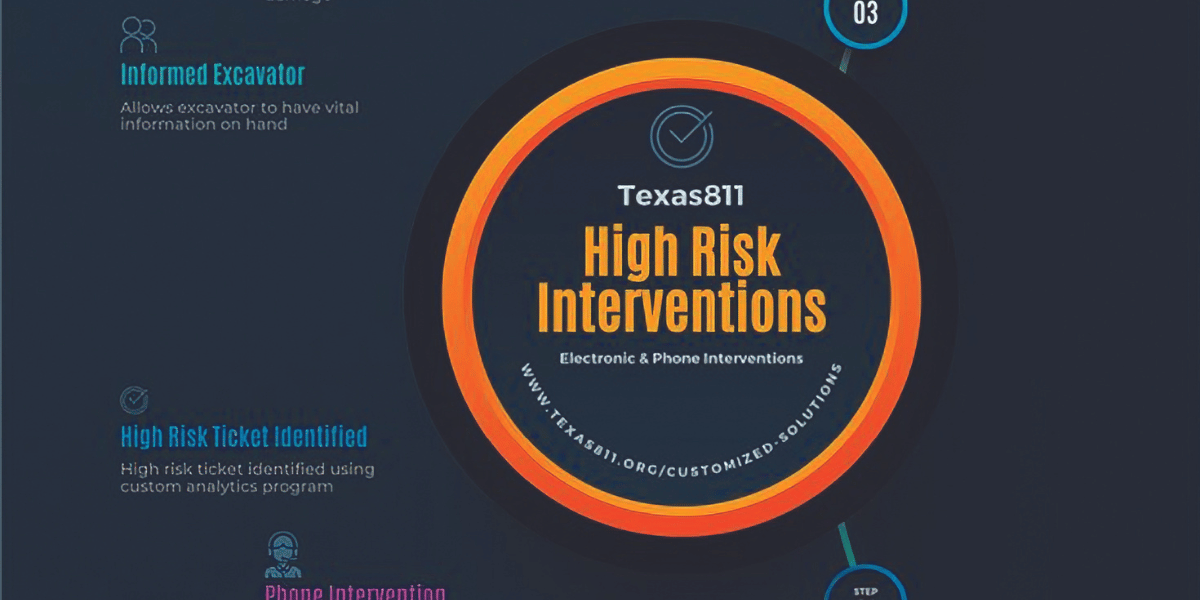
With the job market being highly competitive, and wages going up almost 24% in the past five years, companies are trying to figure out ways they can do more with less. One Call ticket volume is at an all-time high with many struggling to keep up with the abundance of work across the state of Texas, and locator response times and damage rates are a prime indicator of that. Something that I’ve heard a lot over the past few years is, “we treat every ticket as high risk!”. This way of thinking is good in theory, but it’s not realistic, nor is it the best approach when facing staffing and resource shortages.
It’s objectively true that some tickets pose a higher risk of damage to underground infrastructure, and developing a process and implementing technology to help mitigate that risk is much simpler than you’d think. By utilizing a risk score that analyzes multiple data points from historic One Call tickets and other real-world factors like weather patterns and soil data, you can easily define where your finite resources can best make an impact to prevent damages before they happen. If you know you have enough resources to adequately respond to 80 One Call tickets daily, and you have 100 tickets sitting in queue that are due that day, wouldn’t it make sense to make absolutely sure you’re getting to the ones that pose the highest risk of damage to your facilities? Applying a risk score to all One Call tickets allows members to immediately sort their tickets for the day which accomplishes two things: identifies the tickets they MUST get to that day, and identifies the tickets that are worthy of additional mitigative actions.
We mitigate risk in our daily lives through wearing seatbelts, following speed limits, avoiding walking alone in the dark, and clearing steps and walkways of debris. The fact is, humans tend to be risk averse in life, so why would we practice it regularly in our everyday lives but not when it comes to protecting other people’s lives and billions of dollars of underground inf rast ructure? “Damage prevention is a shared responsibility” – a phrase I’ve heard consistently over the past decade and a half and have seen it in action so many times throughout my time in this industry. It's critical that we continue to take that a step further and help limit the negative effects on others that are facing similar challenges with staff shortages and inflation. Having the necessary tools on hand to identify risk and making a strong commitment to communication across stakeholder groups can ensure that we’re helping each other in times when we all need it most.

Over the past four years, we’ve helped our member operators reduce damages by as much as 50% by providing them with additional insight into the risk associated with their One Call tickets, and even by taking mitigating actions on their behalf. Prior to starting excavation identified as “high risk”, we reach out to the excavator to have a discussion with them about the elevated risk at their job site, and even request they take some additional mitigating actions to keep themselves, and the facilities in the area, safe. Sometimes, just alerting a person to elevated risk at the excavation site is enough to trigger behavior changes, and many times, these excavators are thankful for the heads up. Facility operators and excavators both seem to have a decent grasp on the level of risk associated with a particular project, but rarely can they see the whole picture at the same level of an A.I.-generated, machine-learning platform that evaluates millions of pieces of historical data in real time. Humans are fairly good at identifying risk by looking at the consumable information around them, but unless you peel back the curtain and evaluate every tiny piece of data involved in a project, you’ll never fully understand the true level of risk.
Because we’re all busier than ever, there’s simply no time to manually evaluate every pertinent data point for every single job to determine the actual risk. Having a system to do all that dirty work for you means that more time can be spent on ensuring that work crews go home to their families at night, the environment stays clean, and our power, internet and water stay connected.

![ESM Sidebar Ad[87] ESM Sidebar Ad[87]](https://excavationsafetyalliance.com/hubfs/ESM%20Sidebar%20Ad%5B87%5D.gif)



Comments